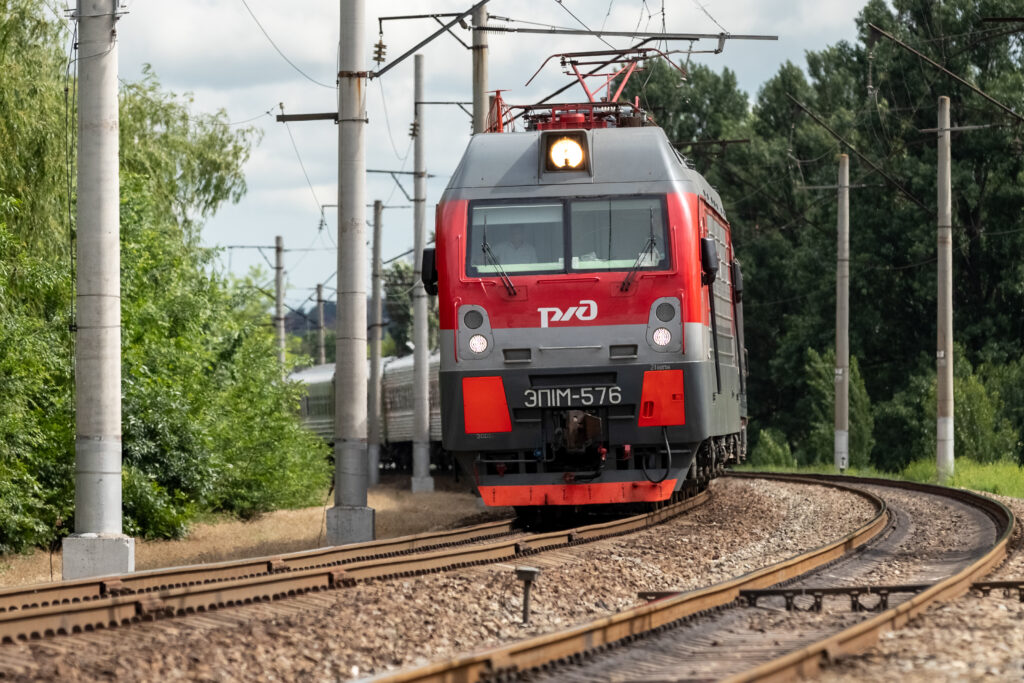Two months after a new type of dangerous coronavirus was first identified in China, the Russian authorities acknowledged the spreading epidemic was threatening the national economy. At first, the Bank of Russia pointed to “a serious risk of not achieving the projected GDP growth parameters.” Then, Putin explicitly admitted how “the negative consequences of the epidemic are being felt [because] they affect the entire system of global economic relations.” Global markets had already gone through the most difficult period since 2008. The main stock indices had lost from 10 to 13% last week, officially moving into the “correction zone”. So as may have been expected, Russia did not remain unaffected: the Moscow Stock Exchange index lost more than 13.5% since January highs, while the rouble lost more than 8%.
Today, most experts believe that everything depends on whether the coronavirus will become a global pandemic. It seems to me, however, that the attention focused on the epidemic is superfluous. If we attribute all the depreciation on global markets last week to the epidemic-related panic, we will see that each life lost in the epidemic has cost the global economy $3.07 billion. If we make a simple extrapolation, this means that economic activity in the world should cease to exist, and all the global wealth should be annihilated in the event of 1.5% of the world’s inhabitants dying. This alone means that as the epidemic develops, its relative impact on the economy will shrink. But there are actually other factors which do not make the situation as horrible as many would like to paint it.
The coronavirus has come at a very “suitable” moment; an increasing number of investors were convinced that the global economy was facing the risk of recession. The current ascending phase of the economic cycle has been the longest one in modern history. In the USA, the economy has been growing already for 128 months in a row, with the average duration of the ascending phase being 44 months in 1945–1981 and 98 months after 1981. By knocking the stock prices, the coronavirus is cooling down investors’ fervour. It objectively reduces the chance of market overheating, which could trigger a large-scale crisis. In other words, reduced economic growth rates in the USA and Europe, the falling prices of speculative assets and readiness of the Federal Reserve to “act” in order to increase money supply – all this allows the leading economies to continue to grow, albeit at a slower pace, rather than fall into recession. For this reason, I am an adherent of an optimistic outlook. I agree with those who believe that a global crisis caused by the epidemic is impossible.
However, the situation looks a little more complex when it comes to Russia. The country may once again become a “weak link”, as was the case during the very deep global recession of 2009 and the countercyclical downturn in 2015.
Firstly, the coronavirus has delivered its main blow on China, a country with very close economic ties with Russia. China failed to publish its January economic statistics (and will most likely fail to publish the February statistics as well). So there are no accurate data on the situation. However, there has been news about the reduction of emissions from power plants by more than a third, a shrinking of the domestic air transport market by 70%, and a reduction of car sales by 92%. Such figures make it impossible to expect the Chinese economy will continue to grow in the first quarter. It probably means that growth rates will fall to at least 4% at year-end. Russia supplies significant volumes of oil and petroleum products to China (77.6 million tons worth USD 41.2 billion in 2019). It supplies other raw materials too (worth USD 5.9 billion last year). These all correspond to 83.4% of exports to China, and 11.14% of total exports. It is possible the physical volumes of raw materials supplies to China in 2020 will shrink by 10–15%. Reduced consumption will be one cause, Beijing’s reorientation towards domestic suppliers another. So commodity prices will continue to fall during the rest of the year.
Thus, instead of growing exports from Russia to China by 1.3% in 2019, we might see a decline by 17–20% in 2020. Potential further problems may include a reduction in imports of high-tech goods and components. This risk is now discussed around the world. Russia, though, is particularly heavily dependent on China in this regard. China accounts for up to 80% of office equipment purchases, for instance, and almost 100% of mobile communications equipment. China also matters for subdivisions of foreign companies operating in Russia, which manufacture electronic goods and cars. Moreover, in 2018–2019, the Bank of Russia increased the share of the yuan in its reserves to 13.2%, having lost almost USD 10 billion from this step. Apparently, the losses might still continue to rise. Beijing will probably be interested in further devaluation of its national currency to overcome the consequences of the crisis.
Secondly, although the stock markets and financial markets in Russia and China have practically no contact with one another, the pressure of the crisis on Russia may come from Western platforms. The wave of sales on global markets last week was not as sharp as in Russia: the S&P 500 dollar index lost 11.5% within five days; at the same time, the Russian RTS dollar index fell by more than 14.7%. Any growing uncertainty leads to an appreciation of the dollar. The currencies of “developing” countries, especially those relying on raw materials, depreciate most against the dollar. Granted, the rouble has not become a record-breaker in this “race to the bottom”. It fell by 8.1% from its January heights; the South African rand fell by 10.5%, the Brazilian real by 9.7%, while the Turkish lira showed a more moderate decline by 6.1%). The trend of a depreciating rouble will entail, above all, an increase in the rouble credit burden on Russian foreign currency borrowers. It will bring potential inflation risks due to higher prices of imports and an overall nervousness among the population and businesses, which may believe that the stabilisation of the rouble in 2016–2018 is now over. Weaker-than-expected economic performance in the first quarter will become a negative context for voting on Putin’s proposed constitutional amendments; it will “mitigate the effect” of the government reconstruction of January this year. In any case, the situation will once again confirm that the financial parting of the ways between Russia and the West does not exist.
Thirdly, the factor of oil prices is being discussed a lot, and a few aspects are worth noting here. Oil prices as such will continue to decline. The recent decrease in commodity prices is a reaction to panic; but it does not reflect the inevitable revision of the IMF forecast of global economic growth in 2020, deeper than a change from 3.3 to 3.2%. At the same time, Russian oil supplies to China may get cheaper even sooner. Moscow has no alternative markets for oil from the eastern parts of the country; it will probably have to renegotiate with Chinese partners to maintain current levels of supplies. (Putin does not want to reduce oil production in proportion to its current volumes, as suggested by the Saudis). Moreover, experts and financial specialists are now saying the price of USD 50/bbl does not pose a risk to the budget. Revenues of Russia’s National Wealth Fund (NWF) will only stop at a “cut-off price” of USD 42.4/bbl. That is true. But we need to take into account that this level is not “taken as the baseline price in our macroeconomic policy this year,” as Putin claims. It only points to a minimum price threshold below which deductions to reserves will stop. The current version of the 2020 budget relies on the baseline forecast made by the Ministry of Economy, which sets the average price of Urals oil at USD 57/bbl. This means that in the new situation, the duties will generate revenues acceptable for the preservation of the NWF contributions. At the same time, the income tax, VAT and personal income tax may generate lower revenues than assumed. The decline in economic activity will reduce budget revenues in these categories. To mitigate this trend, the government needs to depreciate the rouble in proportion to the decline in oil prices. So far, it has been falling three times slower, but this is fraught with serious negative consequences and public disappointment about the authorities’ financial policy.
There are also three other aspects that make the Russian economy less protected from the consequences of the epidemic. First of all, the Russian economy is now in a much less stable condition than the American and European economies, where consumer confidence has been growing quite steadily, and the authorities know how to conduct an active monetary policy in the conditions of an approaching recession. In Russia, with its economic growth of 1.3% last year and the citizens’ growth in income by 0.8%, GDP is growing only thanks to investments made by government and state-owned companies. Such investments are likely to decline under the new conditions. Besides, consumer credit, which was one of the demand drivers in recent years, will grow more slowly, and it will even decrease in volumes in some segments. Finally, if the Russian economy faces recession in 2020, this will be a very bad omen for the future; such a decline in economic activity will be the second one against the global upward trend. The impact of a new cyclical crisis, even if postponed to 2023 or 2024, will be even stronger, as it will disrupt the possible recovery trend.
Of course, we can agree with Siluanov when he says that the budget plans will be fulfilled for 3–4 years, even if oil prices reach approx. USD 30/bbl. Technically, this will be the case but the only question is how such a downturn will impact the economy. In 2009 and 2015, budget expenditures were not sequestrated at all and yet the GDP fell by 7.9 and 2.5%, respectively; the weighted average rouble-dollar exchange rates in these years were by 21.6 and 37.1% lower than in previous years. The Russian economy is more than the central budget, and this should be borne in mind.
It is way too early to sum up the economic consequences of the ongoing epidemic. In my opinion, the peak of panic on Western markets is already over and market quotations will follow a lateral trend for the rest of the year, with a slight tendency to decline. Central banks will continue to stimulate economic growth. Under such conditions, it seems (as always) that oil prices will remain the most critical factor for Russia. For them to recover, we will need not only an absence of recession, but a clear acceleration in global growth rates. There is very little hope for that now. By and large, Russia continues to be a country struck by cyclical downturns in the global economy and tactical declines in commodity prices, while the same factors have a rather multidirectional impact in other parts of the world. As long as this situation persists, Russia will be much more vulnerable in economic terms than most industrialised powers.










